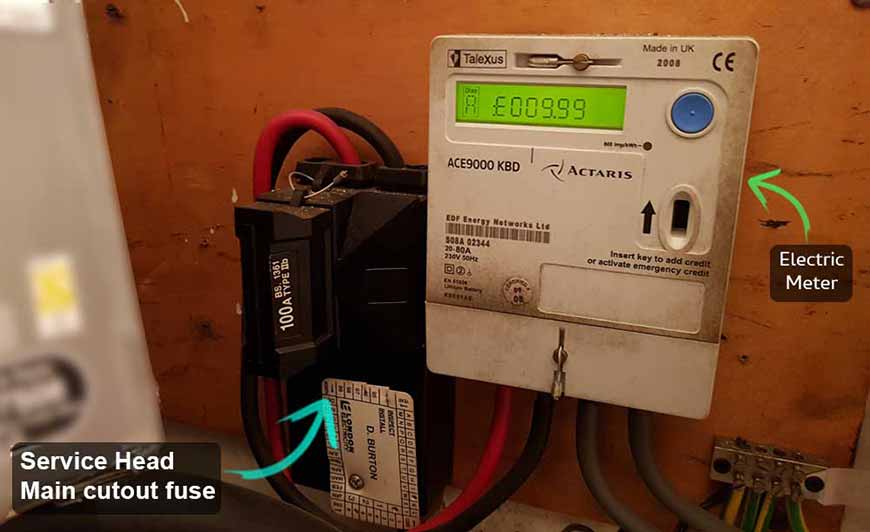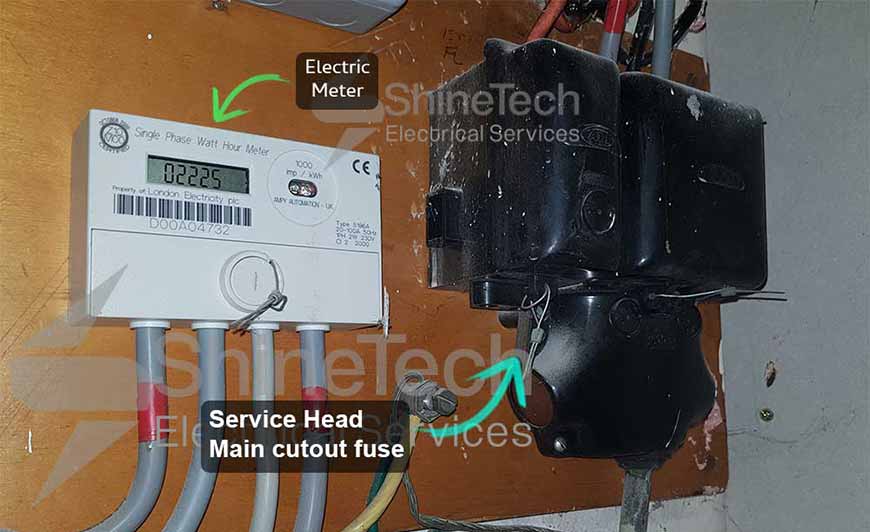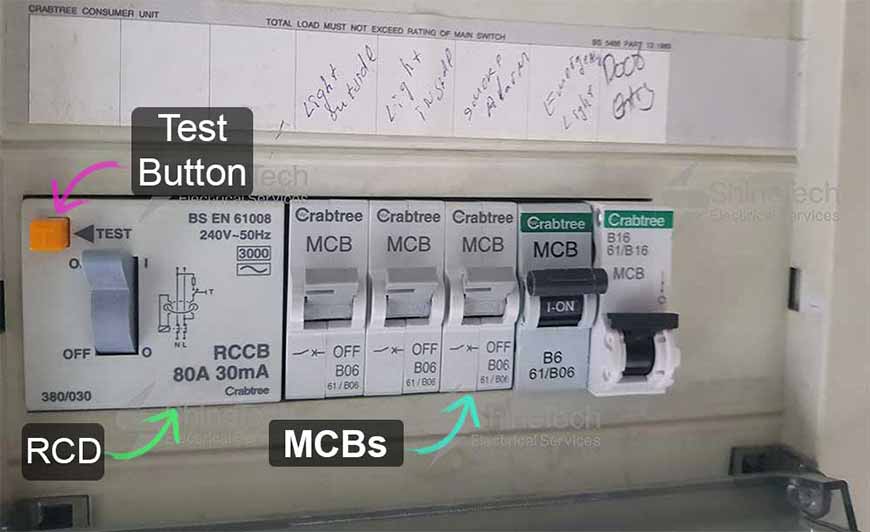Total loss of power is rare. However, believe me, I have attended many callouts to address complete black-out situations.
Total loss of power can be caused by both external and internal electrical faults.
It is beneficial to understand the fuse board or consumer unit components when dealing with any electrical problems. To read more about fuse board or consumer unit components, read Every-day-terms for the components of a fuse board
Possible causes of a total power outage:
- If you have an RCD (residual current device) as the main switch, it may have tripped. If you don’t know what an RCD is, look at Image 3 and Image 4 below.
- You may have a loose connection somewhere between the fuse board and the main service head. After carrying out the rest of the checks, if you believe this could be the case, this is the time to call an electrician.
- There may be an external power outage – your power supply from the DNO (Distribution Network Operator) may have been cut. As this is an external issue, this is something beyond our control. You have no choice but to wait for the DNO to fix the problem on their end and reinstate the power. However, at least you can report the issue to the DNO. In London and south east England, the DNO is UK Power Networks.
- Your main cut-out fuse may have blown, which is located on the service head. If you are not sure what your service head and main cut-out fuse look like, look at Image 1 and Image 2. This is extremely rare. And, if you suspect this could be the case, it is the time to get the phone and call your DNO. Usually, DNO’s emergency services are free of charge.
- Run out of credit on a pay-as-you-go meter? This clearly is a joke! But, believe me, I have attended a few callouts at night and discovered there was no credit in the meter. So, make sure you have got credit!
How to check whether it is an external or internal electrical problem?
STEP 1: The first thing to check is the electric meter. Look at your electric meter to see whether it has got a display or an indicator light. (If it is an old meter without one, skip this step.) All modern digital electric meters come with an LCD display [Image 1 & Image 2].
If the display is lighted up or an indicator is illuminated on the meter but you have no power at home, this indicates that you have faulty electrical equipment or faulty wiring somewhere in your home. You have an internal electrical problem. If there is no light on the meter, you likely have an external electrical fault.


STEP 2: Secondly, check your fuse board. It is against the BS7671 Wiring Regulations to have an RCD or an RCCB (residual circuit current breaker – a type of RCD) as the main switch [Image 3 & Image 4]. But, they do exist quite widely in the older installations.
If the main switch is an RCD or RCCB and has tripped off, try lifting it up. If it does not reset or keeps tripping back down straight away, this means there is power up to that point in the system.;’


Confirm that it is not an external power outage
STEP 3: If you have an old analogue electric meter without a digital display or an illuminating indicator, speak to your neighbours and check if they have got electricity in their homes.
Don’t just look at the street lights and your immediate neighbours, walk a few homes up and down the street and make sure everything is okay there. If some of your neighbours have a similar problem to yours, then it is something to do with the external power. You will need to call your DNO. In London and south east England, it is UK Power Networks. If the power supply in everyone else’s home is fine, call an electrician.

